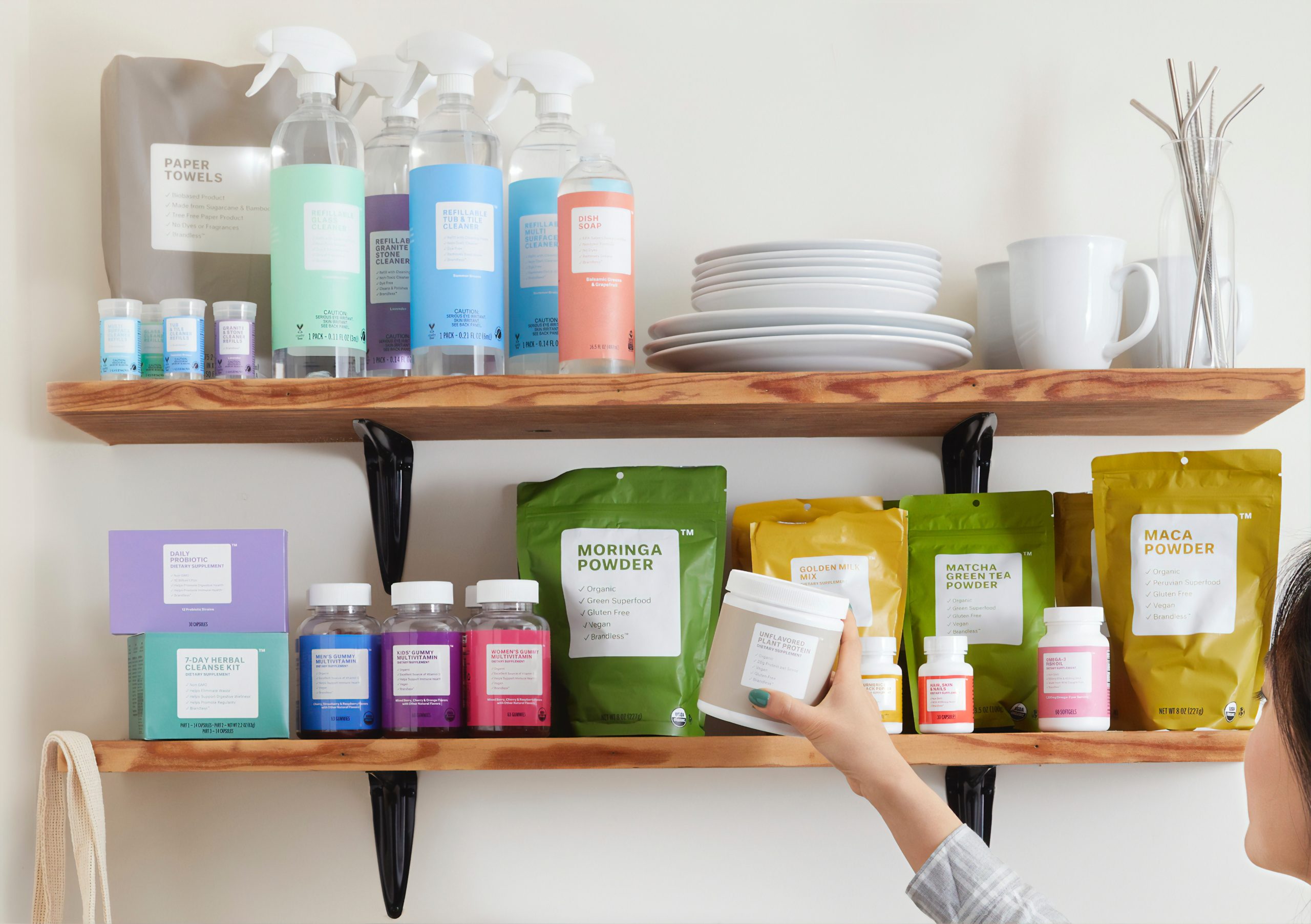

Quick Links
Quick Links

I hear this question a lot: “How can I grow Amazon sales when they cut into my profit margins and compete with me at prices I can’t beat?”
One of the biggest hindrances to selling on Amazon is definitely the bite that the marketplace takes out of each sale. And when you have such a huge entity undercutting sellers at every turn, it can seem like an exercise in futility.
Although selling on Amazon can be daunting, there’s a way to feasibly grow Amazon sales. You have to work within the system or risk being shut down, but that’s not necessarily a bad thing. The key is to focus on the benefits that Amazon provides and use them to their fullest.
Here are some tips to help you make Amazon work for you so you can not only survive on the marketplace but also grow Amazon sales.
Protect Your Brand

It’s always best to start with a solid foundation. In terms of online selling, this means a solid brand. Before you even begin to build up a reputation, you can strengthen your brand in several ways.
1. Control Distribution
They are notorious for undercutting to get ahead. You will quickly lose ground to them if you aren’t actively monitoring and going after them.
Unauthorized resellers:
- can easily compete with you on pricing and win Buy Box share by using shady marketing tactics.
- can make their offer look like it comes from your brand, luring customers away from you.
- don’t have a relationship with you to maintain, so they aren’t concerned about your reputation.
Unauthorized resellers aren’t likely to pay as much attention to the way they handle product, leading to increased customer complaints. The result is damage to your reputation when customers associate purchases from them with your brand. And this only gets worse when they’re piggybacking on your listing. Without the trust of customers, you can’t grow Amazon sales.
On top of monitoring unauthorized resellers, you need to be vigilant regarding counterfeits. Fake product, even purchased at a lower price, invariably upsets Amazon customers. People go to Amazon because they expect quality for a good price. When they see your name on a product, they will go after you. Even if your name isn’t literally on the product, they will tend to blame you because it’s easier and because no one likes to admit they’ve been duped. You can’t grow Amazon sales with a bad reputation.
If they’re on your listing, the review will end up there. Even if they’re not, reviews can be posted anywhere online. You can’t rely on Amazon to sort out customer complaints against another seller.
Protect yourself by dealing with these shady actors before they can cause any damage.
2. Control Listings

The best way to control your listings on Amazon is to get registered as a brand.
This will reduce the number of sellers that succeed in piggybacking on your listings. It also makes it a lot easier for you to get them kicked off if they do somehow manage to list through you. Being the only seller on that listing, you will control the quality of every item sold. You will also be able to ensure proper fulfillment and excellent customer service. (See section on FBA below for quality assurance with Amazon-fulfilled items.)
Amazon actually has a guideline for this and tends to block featured offers on product detail pages where items are priced higher than on other marketplaces or online stores. This will not apply to you if you control your listing, but they can still block your visibility in a number of ways if you’re not offering the best price for the same item.
Remember that one of Amazon’s biggest selling points is offering customers great quality at the lowest price. You’ll have a much better chance to grow Amazon sales if you go with this flow rather than fight it.
Don’t Compete
As an extension of the above, it’s best not to have to compete with anyone else.
3. Avoid Price Wars

Competing with other sellers on the same product boils down to a single differentiator: price.
You could even end up competing with Amazon, which is a race you can’t win. You might still make some sales at your target price, but you’ll likely lose out when you factor in slower-moving inventory with either higher storage fees or higher costs for ordering or shipping fewer items. It’s not the way to grow Amazon sales.
As you may have guessed, having no one else on a listing means selling branded products. You don’t need to manufacture them – you can work with a manufacturer to white label.
4. Avoid Amazon
To be completely safe from the biggest profit-stealer (Amazon itself), it’s best to steer clear of anything they are interested in. You simply can’t compete with them, so you will grow Amazon sales much more quickly and easily if you don’t even try.
You may be thinking that the niches Amazon doesn’t touch are too difficult for you to succeed in. That’s partly true. These niches do not promise the best margins, and that’s why Amazon doesn’t get into them. Neither do most other sellers. This leaves them open to brave sellers like you. It doesn’t have to be that difficult, and it’s certainly easier than racing against Amazon.
If you’re willing to provide top quality with the best customer service, then you can definitely grow Amazon sales in one or more of these niches. You should be bringing your best every day anyway, especially on Amazon. Instead of wasting time racing to the bottom, invest time into providing the value that wins you loyal customers.
5. Be Unique

By staying away from Amazon and leaning more towards less popular niches, you will also invariably transition away from the common into the exclusive. This falls nicely in line with the strategy of selling branded products. What you want to add here are unique offers. This can be unique products or unique offers on not-so-unique products.
Bundling a unique product with one or more popular everyday items or selling an extra item with your unique product is a winning combination. You can leverage the benefits of both to overcome the disadvantages. You can also create a unique bundle of ordinary products to get some attention.
Whichever you chose, because the configuration is unique, it will be listed as a unique product. This means you have in your favor:
- the absence of the competition that exists with popular items.
- the popularity of the popular product to pull up your unique item.
- sole presence on the listing, winning you the Buy Box automatically.
- added visibility in searches for the main product.
So you’re pretty much competing here without actually having to deal with the impact of direct competition. You’re playing by Amazon’s rules but with a twist that puts you on top.
Focus on Sales

This may be a no-brainer, but in the race to the top on Amazon, it’s easy to forget.
The more you can sell, the more money you make. This isn’t just true in terms of the basic mathematics of two being more than one, though.
When you are able to move more inventory, you can:
- stock more without incurring additional storage fees (whether FBA or FBM).
- negotiate better deals with suppliers for bulk orders.
Both of these equate to better margins, which can increase your profits exponentially as you reach higher sales volume tiers. It’s a great reason to do all of the above, and below you’ll find how you can achieve the symmetry that lets you grow Amazon sales without dealing with undercutting.
6. Manage Inventory

As you keep your prices attractive on listings you control in niches that aren’t highly competitive, you want to keep a close eye on your inventory.
Focus on open and clear communication so you can:
- place orders quickly and smoothly.
- know as definitively as possible when the items will be available on your listing.
If you’re using FBA, make sure that you have just the right levels to stay within Amazon’s calculated margins between low stock and overstock. If you fulfill yourself, carefully calculate the levels you need to get the best warehousing deal. Check on this frequently as changes will happen as you grow your Amazon sales.
Make sure that you can compensate for changes with a smooth and accurate PO system. You may want to get some help for this, whether it’s purchasing automation tools or hiring an assistant to handle the whole process.
Don’t be overly concerned with getting the best deal when it comes to price versus making the sale. At this point, you’re making an investment to grow Amazon sales. It will mean taking a hit in terms of profits in the present to build up to bigger, long-term wins.
If you sell on other channels from the same warehouse or through FBA, don’t forget to sync your stock. The danger when doing FBA is running out of stock, which really hurts your scores and can negate your efforts. The danger when doing FBM is overselling, which really hurts customer relations and can likewise render your efforts useless. Protect your investment by staying organized.
7. Take Care of Customers

Having what customers need when they need it is already a big step on Amazon. Now you need to take the next step and make sure that they have a great experience from start to finish. This is because customer feedback on you as a seller and reviews on your products bear hold a lot of weight on your performance score.
Going out of your way to collect high praise from Amazon customers is another investment.
It doesn’t literally apply to other products, but the high scores will lend credibility to your store as a whole. You can then sell other products better, even if there’s a lot of competition for them.
Let’s review how the last few items on this list connect: Unique offers pave the way to sales, which paves the way for customer praise, which brings you loyal customers to whom you can more easily sell competitive items.
8. Optimize

Amazon SEO is a broad topic, but here are the basics.
You won’t be able to grow Amazon sales effectively if you don’t optimize your listings. To do that, you have to understand how Amazon SEO works. Amazon is a search engine and a marketplace, so optimization is different there than how you would optimize to rank on Google, for instance. You need a guide specifically for Amazon to help you do it right. This will show you how to do keyword research and place phrases in your listings.
Then you need strong copywriting to put all those keywords together in a way that naturally describes each product. You also need to give customers all the information they want and need to make a purchase. And always check out Amazon’s best practices for creating descriptions, titles, and A+ content.
After that, you need to make sure that you have high-quality images of your products that meet Amazon’s standards. For best results, have professional shots taken from all angles.
9. Get Reviews

Reviews are all-important for success on Amazon. It’s where purchase-ready shoppers go. This means they will always put a lot of weight on what customers who have bought your product are saying about it, as well as the quality of the service you provide.
You can never have enough reviews. You want to make sure you don’t break Amazon’s Terms of Service, but you need to be constantly trying to get more. More reviews mean less risk. Go as far as giving away products to encourage positive reviews. And get reviews not just on Amazon, but on every other channel you maintain a presence.
Today’s customer is also often short of time and can get confused when presented with the ton of options that are available on the internet. They therefore often rely on the social proof that reviews provide to help them decide.
10. Be Prepared

Always be prepared any time you sit down to make changes to grow Amazon sales. Take great care, which means having dedicated time and enough resources to do things right. This extends past making the changes, too – you need to make sure that you can handle the additional orders that come in after you’ve taken these steps to improve conversions.
Ideally, when you make the decision to seriously grow Amazon sales, you want to start building a dedicated system around the marketplace. Hire people who are going to be available to focus on your Amazon store. Have a dedicated budget to spend on Amazon growth. You want to make the most out of all the available opportunities and minimize mistakes.
11. Use Amazon Tools
When you can’t do it all yourself, look into how you can leverage Amazon’s built-in systems to take some of the load off.
FBA is a great example of a solid system that you can trust to take a huge eCommerce task off your hands. It reduces pick and pack errors, improves shipping times, and best of all, if there’s any problem whatsoever with shipping, Amazon takes the blame. Plus, your listings get to appear in Prime searches, and Prime-eligible products have higher conversion rates across the board.
Another great example is Amazon PPC. They have the best Amazon data to base your campaigns on. You can still hire experienced help to manage your campaigns, but there’s just no better advertising strategy than to do it on Amazon itself.
Final Thoughts
On top of all this great stuff that you can do to grow Amazon sales, there’s one final thing I want to leave you to mull over. Amazon is its own beast, and quite proprietary. But you can still boost conversions considerably by marketing off the marketplace.
You want to take advantage of all the channels you can to support your Amazon business. This can be a blog, a YouTube channel, a Facebook business page, Twitter and LinkedIn accounts – whatever makes sense for the products you sell. Connect and engage with people there, mature the sale, then send them to Amazon to make the purchase. This will do wonders for your conversion rate, the number one factor in growing Amazon sales.
